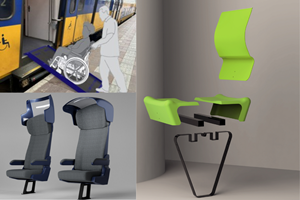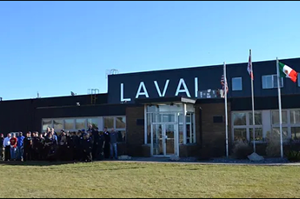CAMX 2015: Strong Mix of Market, Technical, Product Innovation
CAMX 2015 (Oct. 26-29) in Dallas, TX, was, by all accounts, a success. Feedback from the exhibit floor and the conferences was positive and upbeat. CompositesWorld was there and offers this review of highlights from the show floor and the session, including product award winners, keynote address and industry announcements.
CAMX 2015 (Oct. 26-29) in Dallas, TX, was, by all accounts, a resounding success. Feedback from the exhibit floor and the conferences was positive and upbeat, and with 7,500+ attendees, the show has established itself as North America's largest composites trade event. If you couldn't make it to CAMX, here are some highlights from the week. And don't forget to mark your calendar for CAMX 2016, Sept. 26-29 in Anaheim, CA, US.
ACMA ACE Winners
ACMA’s Awards for Composites Excellence (ACE) are given each year to composite parts and technologies that represent unusual creativity in design, processing and application. The 2015 ACE winners are:
Design Category, Most Creative Application Award: Advanced Composite Orthotic Systems, from Kingetics LLC. This orthotic system, comprised of two hinged composite insoles, is designed to increase puncture, blast and fire resistance 300-1,000%. It also increases the energy efficiency of gait with the spring-lever orthotic and prosthetic mechanism. Combat boot weight is decreased 25% compared to current U.S. Army-mandated issue polyurethane foam boots reference.
Manufacturing Category, Material and Process Innovation Award: Nanoscilica-Infused Resin for Use in Automotive Driveshaft, from QA1 Precision Products. This automotive driveshaft carries torque from the engine to the rear axle. All QA1 driveshafts are wet filament wound with carbon fiber and a thermoset epoxy, which uses a spherical nanoscilica (3M’s Matrix Resin 4833 epoxy). This nanoscilica improves the properties of the resin, including tensile modulus, fracture toughness and moisture absorption.
Manufacturing Category, Equipment and Tooling Innovation Award: Productive Engineering Software for Virtual Allowable Generation, from e-Xstream engineering. Digimat-VA is a software solution designed to replace or complement lengthy physical testing of composites. Finite element modeling is used to represent the coupon tests required for material char- acterization. Generation of virtual allow- ables enables significant time and cost reductions. Virtual allowables can be generated before the actual allowables, speeding up the early design of composite parts; they can complement an existing physical test matrix (for instance to explore new layup possibilities), and they can reduce physical testing by replacing material batches to be tested. Overall, time and cost reductions range between 20 and 40%.
Market Growth Category, Infinite Possibility for Market Growth Award: Composites Help Steer Toward a Wireless Road Infrastructure, from Strongwell
Corp. Strongwell’s pultruded fiberglass DURAGRID HD-4000 2.5-inch grating panels are installed as a trench cover at the Utah State University Electric Vehicle and Roadway (EVR) research facility in Logan, UT. The EVR serves as the vehicle systems integration facility for the Center for Sustainable Electrified Transportation. Housed beneath the grating are magnetic transfer plates, which charge electric vehicles in motion. DURAGRID HD-4000 provides ample support for vehicle loadings while protecting the magnetic transfer charging plates on the electrified, quarter-mile test track.
CAMX Awards Winners Emphasize 3D Printing, Automotive Lightweighting
CAMX 2015 organizers at the show’s opening general session the winners of the second annual CAMX Awards, given under two categories: Combined Strength, emphasizing creativity and collaboration; and Unsurpassed Innovation, emphasizing process or material innovation.
Winner of the Combined Strength Award was BAAM, Big Area Additive Manufacturing technology developed by Cincinnati Inc. (Harrison, OH) in collaboration with Oak Ridge National Laboratories (ORNL, Oak Ridge, TN).
BAAM encompasses a number of innovations that enable large-scale 3D printing. Its first generation offered a build platform measuring 13 by 6 by 3 ft; the latest version has a build area of 20 by 8 by 6 ft. The BAAM enables components of arbitrary geometry to be 3D printed at a scale that is times larger than any other commercial system, using a screw-extrusion tech- nology for deposition, similar to what is used in the injection molding industry. Cincinnati Inc. and ORNL designed an extrusion screw specifically for the BAAM system and mounted it on a high-speed, high-resolution gantry system. BAAM is also the first to deposit with carbon fiber reinforced-plastic pellets and uses a novel Z-table that provides the capability to build large parts. The system also features innova- tions that improve layer-to-layer adhesion and the ability to easily separate support material from build parts.
Receiving the award were Rick Neff, manager market development at Cincinnati Inc., and Lonnie Love, group leader at ORNL. They commented on the Shelby Cobra (on display at CAMX) that was designed and then manufactured with BAAM in less than two months in late 2014 and early 2015. “ORNL first mentioned the Cobra on Nov. 10 of last year,” Neff recalled. “By January it was done and you couldn’t tell that it was additive manufactured.” Love and Neff credited a variety of partners, including Techmer, Sabic and Alpha Star.
Winner of the Unsurpassed Innovation Award went to Continental Structural Plastics’ (CSP, Auburn Hills, MI) TCA Ultra Lite, a sheet molding compound composed of a proprietary thermoset resin matrix combined with Advantex glass fiber from Owens Corning (Toledo, OH) and glass bubbles, instead of CaCO3, to create a lightweight composite for automotive structures. Suitable for Class A body panels or structural components for light vehicles or heavy trucks, CSP says design studies have shown that at 1.2 specific gravity Ultra Lite offers weight savings of up to 28% over the company’s mid-density TCA (1.6 specific gravity), and 43% over its indus- try-proven standard-density TCA material (1.9 specific gravity).
CSP says the use of glass bubbles allow the resin to adhere to the matrix and increase the interfacial strength between the bubble and the resin. This is a patented treatment technology that results in a more robust resin mix that makes molded parts more resistant to handling damage, and prevents the microcracks that cause paint pops, pits and blistering.
Keynote: Automotive Industry in Midst of Substantial Change
Gary Smyth, executive director of Global Research and Development at General Motors, formally kicked off CAMX 2015 yesterday with a keynote address to an audience of about 2,000. He emphasized the social, technological and material evolutions that are reshaping how cars and trucks are being manufactured and used.
The change taking place, he said, requires a collaboration with composites materials and parts suppliers, with the goals of reduced vehicle weight, increased safety and customer satisfaction. “You can look at what’s happening with the transformation of the industry, and the disruption of the industry,” exhorted Smyth, “and really look at what can you do and how you can be proactive and again be a part of that transformation.”
As part of this transformation, Smyth discussed where and how advanced materials have been applied on GM cars in recent years—including use of aluminum in the Corvette frame and carbon fiber in its hood and roof.
Smyth then focused on three broad drivers of change in the automotive industry. First, regulatory, in the form of fuel efficiency and emissions requirements in the U.S., Europe and China. As has been reported, U.S. standards call for corporate average fuel efficiency (CAFE) to be 54.5 mpge by 2025. In Europe, the standard is 58 mpge by 2020; in China, 56 mpge, also by 2020. This is forcing GM and other automakers to push out more hybrid-electric and all-electric drivetrains.
However, he cautioned against thinking that those dates represent fuel efficiency finish lines. “2020 for Europe or China is not the end,” he said. “It’s basically a gate we’re going to go through and continue to reduce CO2.”
Smyth next focused on the demands of the urban driving environment shaped by mega and hyper cities, such as Tokyo and Mexico City, which create preference for smaller, safer vehicles. This is engendering sensing technologies that help make vehicles aware of each other, pedestrians and cyclists.
Finally, Smyth assessed the state of self-driving vehicle technology and GM’s response, which led to a discussion of the vehicle-sharing economy and the prospect—especially in urban environ- ments—of sharing replacing ownership. Smyth’s assertion is that younger drivers, increasingly, don’t see vehicle ownership as imperative as their parents and grand- parents do.
During Q&A, Smyth was asked what kind performance a company like GM expects from a high-performance composite material. Smyth quickly turned the question around and put the onus on the composites fabricators to prove to automakers the value of their products. “I think composites can play a role, even beyond the Corvette,” he said. “What I’m looking for from you is put together what you see as the value proposition [of your products]. We’re looking for a good value proposition that can improve the emissions of the vehicle, the recyclability of the vehicle, the performance of the vehicle, the mass, etc.”
Ultimately, Smyth said, GM — and all automakers — need help from the entire supply chain to help move the auto industry forward: “In the end, we can’t stop. Look where we are today in regards to efficiency and look at what we need to do over the next five to ten years. We have to do the right thing whether it’s regulated or whether it’s just the right thing.”
IACMI, Composites One, MVP Join Forces in Training Partnership
Officials from Composites One, its Closed Mold Alliance and Magnum Venus Products (MVP) announced on the show floor in the Composites One demonstration area a partnership with the Institute for Advanced Composites Manufacturing (IACMI) to offer composites education opportunities at four U.S. locations in 2016.
Leon Garoufalis, president and COO of Composites One, announced the partnership with Craig Blue, CEO of IACMI, and Peter Hedger Sr., president and CFO of MVP. Under the terms of the partnership agreement, Composites One and the Closed Mold Alliance, using MVP equipment, will lead four two-day schools in advanced composites technologies at key IACMI locations across the U.S.
Blue says that these educational programs will, ideally, attract students numbered in the hundreds, primarily of high school age. Outreach, he said, will be done through STEM programs, as well as the FIRST Robotics Competition, which involves students throughout the K-12 education system.
Garoufalis notes that Composites One is well suited to meet the needs of this outreach, given his firm’s heavy involvement in workforce development. “This is an incredible opportunity,” he says. “Over the past decade, we’ve provided hands-on training in closed molding and advanced processes to more than 4,000 manufacturing professionals. With IACMI, we’ll reach an even wider audience, ultimately helping to grow composites manufacturing in the US and working to create more jobs in the composites industry.”
Hedger, of MVP, notes that partnerships of this type offer a model that he hopes
will be replicated elsewhere in composites. “Our partnership here is something we want to pursue with others as well,” he says. “We want to break down barriers to help move the composites industry forward.”
The schools will cover advanced and closed mold processing, out-of-autoclave production, additive manufacturing, product lightweighting, prototyping, ystems and equipment selection, advancements in high-performance materials, data acquisition, modeling and simulation. Blue also says that IACMI will announce soon an internship program for under- graduate and graduate college students at IACMI technology centers. Details should be available in early 2016.
IACMI is a consortium, funded by the U.S. Department of Energy and the composites industry, composed of suppliers, universities, national labs and governments working to accelerate devel- opment and commercial deployment of advanced composites.
The composites education sessions include:
- Process & Advanced Materials Workshop, April 5-6, Knoxville, TN/Oak Ridge National Laboratories
- Intermediate Processing & Wind Energy Workshop, June 14-15, Denver, CO/National Renewable Energy Laboratory
- Process & Advanced Materials Workshop, Aug. 9-10, West Lafayette, IN/Purdue University
- Process & Automotive Market Advances in Composites, Nov. 1-2, Detroit, MI/Michigan State University
CAMX 2015 Poster Session Winner and Runners Up
The winner and runners up of the CAMX 2015 Poster Session were announced at CAMX. They were:
- Winner: Carbon Nanotube Fiber Composites for Simultaneous Structural Health Monitoring and Strengthening of Steel Structures; University of Delaware; Sagar Doshi, Shafique Ahmed, Erik Thostenson, Jennifer McConnell, Thomas Schumache
- Runner up: REWIND: The Way From Wind Rotor Scrap to Valuable Material; Institut für Textiltechnik der RWTH Aachen University; Davide Pico, Gunner Seide, Thomas Gries, Robert Brüll Grindermax GmbH, Michael Grein DHB Maschinenbau GmbH, Martin Daniel
- Runner up: Microstructural Investigation of Commercially Available Pristine Composite Bars for Concrete Reinforcement; University of Miami; Omid Gooranorimi, Wimal Suaris, Edward Dauer, Antonio Nanni
- Runner up: Identifying the Strain-Free Condition of Non-Symmetric Carbon Fiber Laminates Using Digital Image Correlation; The University of Southern Mississippi; Kyler R. Knowles, Jeffrey Wiggins
- Runner up: Method to Reduce Costs for Production of PAN-Based Carbon Fibres; Institut für Textiltechnik der RWTH Aachen University; Franz Pursche, Gunnar Seide, Thomas Gries.
Related Content
Johns Manville launches multi-end roving MultiStar 272
Multi-end fiberglass roving serves as a reliable product for SMC compounders aiming to excel in automotive applications.
Read MoreSMC BMC Design Award 2024 winners showcase projects at JEC World
Awards ceremony to be held on March 6th will recognize the top three selected SMC and BMC designs submitted by European design students and young design professionals.
Read MoreIDI Composites opens new global headquarters, manufacturing and technology center
The Noblesville, Indiana, facility includes SMC and BMC manufacturing, an R&D center and the company’s corporate headquarters.
Read MoreNational Composites announces partners with compression toolmaker Laval
The new alliance will broaden National Composites’ capabilities in SMC and BMC and tooling, while providing customers with comprehensive solutions, from initial design to final delivery.
Read MoreRead Next
All-recycled, needle-punched nonwoven CFRP slashes carbon footprint of Formula 2 seat
Dallara and Tenowo collaborate to produce a race-ready Formula 2 seat using recycled carbon fiber, reducing CO2 emissions by 97.5% compared to virgin materials.
Read MoreVIDEO: High-volume processing for fiberglass components
Cannon Ergos, a company specializing in high-ton presses and equipment for composites fabrication and plastics processing, displayed automotive and industrial components at CAMX 2024.
Read MoreDeveloping bonded composite repair for ships, offshore units
Bureau Veritas and industry partners issue guidelines and pave the way for certification via StrengthBond Offshore project.
Read More

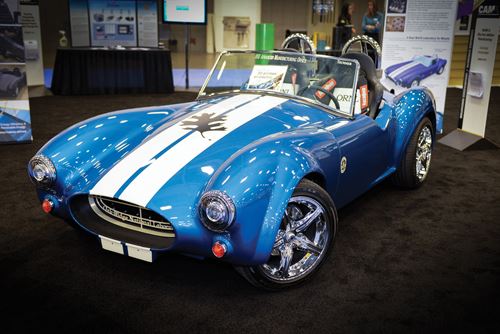
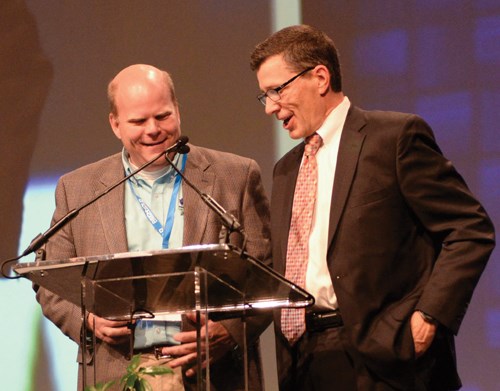
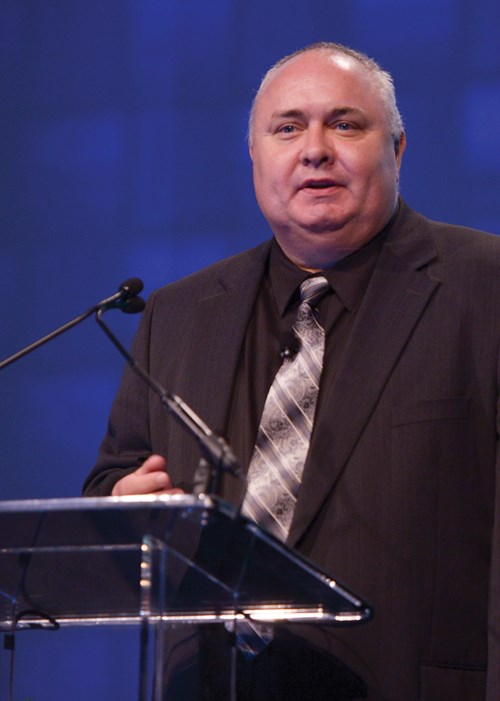
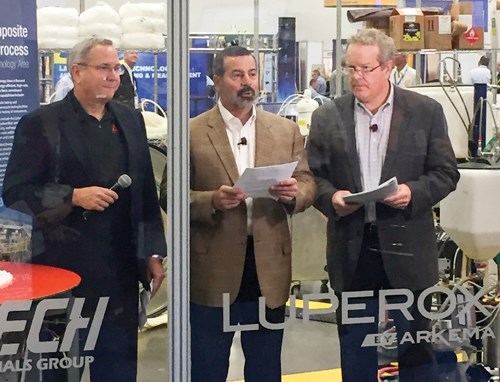












.jpg;maxWidth=300;quality=90)


